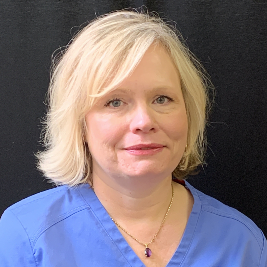We hope that you notice a difference the moment you step into Innova Primary Care. One of our core values is mending people and mending standards. Because of our commitment to renewing healthcare from the inside out, we do things a little differently. Our patient-centered approach to health means that we work together with our patients to determine the best care plan. One way we do this, for all of our patients, is by refusing to allow drug reps into our offices. Today, we will dive into the complexities of the relationship between pharmaceutical companies and doctors.
In 2018, healthcare spending in the United States rose an astounding 4.6%.
On average, Americans spend over $11,000 per person per year on healthcare costs equating to 3.6 trillion dollars in 2018 alone. National health expenditure data from the Centers for Medicare and Medicaid Services shows that there was also a steep rise in spending on prescription drugs. Prescription drugs cost Americans 335 billion dollars a year.
Prescription drug costs are out of control.
Healthcare expenditures continue to rise, and projections for 2019-2028 show an expected annual spending growth of over 5 percent. This means that by 2028 we may be spending at least 6.2 trillion dollars on healthcare alone and prescription drugs are a major contributing factor to this sum. A spending increase of 3.7% on prescription drugs is expected for 2020, resulting in an estimated 358.7 billion dollars, which is due in part to rising drug prices.
The latest research from the CDC shows that over 131 million Americans use prescription drugs. Data also shows that close to half of all US residents have taken at least one prescription medication in the last 30 days. Of those surveyed, 25% report using at least 3 prescription medications within the last 30 days, and a little more than 12% say they used at least 5 prescription drugs within a 30-day time period.
We are a medicated nation.
Prescription drug use varies by age, gender, race, socioeconomic status, and other demographic measures. For example, the older you are, the more likely you are to have at least one prescription drug. Seventy-five percent of those over the age of 50 are on at least one medication, and that percentage rises to ninety-one percent at age 80 and above. While 66% of women ages 18-34 use prescription drugs, only 40% of men in the same age category do. However, this gap decreases as both genders age. Regarding costs, the elderly and those with chronic conditions tend to have more expenses due to prescription medications.
We should also note that costs play a role in compliance. This is especially true for vulnerable populations. Statistics show that oftentimes those who need medications the most will forego filling their scripts or take a reduced dosage due to costs.
Something has to change.
Prescription drugs are not the enemy. They are essential for so many of us to help manage our health and chronic conditions. However, how medications are presented to physicians by pharmaceutical companies needs to undergo a major overhaul. Pharmaceutical companies get their drugs into the hands of physicians via drug reps. There is one drug rep for every five physicians in the United States. These individuals’ mission is to get facetime with physicians and healthcare providers to supply them with promotional information that will hopefully generate sales.
The sales process often involves in-person visits with free meals, sample drugs, and items such as pens, notepads, and other products with their particular drug’s logo. While these items are given away freely, how free are they really? Consider how you feel when someone continually supplies you with freebies. If you are like most, you probably feel the need to return the favor. Approximately 94% of all physicians accept gifts and items from drug companies. While it doesn’t look like a big deal to outsiders, and drug companies will tell you the same, the amount of money the pharmaceutical companies spend on advertising suggests otherwise.
We are not saying that drug reps are bad people.
However, as it currently stands, we do not believe that the pharmaceutical industry always works in the best interests of the patients and physicians they seek to serve. These heavily touted drugs by drug reps may actually not be the best for patients. Why? New drugs may not be what the patient actually needs. There may be a more cost-effective generic that a patient never learns about because there are free samples of a new drug in their doctor’s office. You may notice that we do not use drug samples in our office. Here are just a few of the reasons why:
- New drugs are not necessarily less risky.
- Free samples of new drugs DO NOT lower costs for patients in the long run.
- New medications do not always mean better.
- The cost of free samples ends up being passed on to patients.
Innova Primary Care does not accept free meals from pharmaceutical companies, nor do we allow them to market in our facility. We rely on science-backed research to determine the best medications for our patients. In fact, we’d love for you to check out our track record. You can see from the data that we do not accept anything from the pharmaceutical reps. We will not allow any outside influence when it comes to your care.
If you want to know whether your physician sees drug reps, we suggest that you ask! Ask them if they entertain drug reps or accept any meals or payments. This is powerful information for you as a patient.
Again, we are not saying that drug reps are bad people. We simply do not believe this is true. But the way the prescription medication industry works needs to change. Our commitment to you is to continue to be an unbranded office. We will not allow the industry to sway our decisions. After all, your health is at stake





 About
About

 About
About About
About About
About
 About
About About
About

 About
About About
About About
About About
About











